This paper is reviewed in accordance with the Peer Review Program of IRA Academico Research
Procurement Management Practices and Financial Performance of Listed Manufacturing Firms in Kenya
Abstract
Keywords
Full Text:
PDFReferences
Acquah, I. S. (2024). Unravelling the asymmetric effects of procurement practices on firm performance: A complexity theory approach to complementing fsQCA with NCA. Science Direct.
Albrecht, S., Breidahl, E., & Marty, A. (2018). Organizational resources, organizational engagement climate, and employee engagement. Career Development International, 23(1), 67-85.
Anane, A., Adoma, V., & Awuah, G. (2019). The effect of procurement practices on service delivery: a case study of VRA, Ghana. Asian Journal of Economics, Business and Accounting, 13(1), 1-23.
Blumberg, B. C. (2014). EBOOK: Business Research Methods. McGraw-Hill.
Bravo, V. L. (2021). Analyzing competing logics towards sustainable supplier management. Supply Chain Management: An International Journal, 27(7), 49=63.
Chen. (2024). Supply chain agility, supplier synergy and information sharing on supplier performance: Basis for supplier relationship management framework. International Journal of Research Studies in Management.
Deloitte. (2017). Digital Procurement New Capabilities from Disruptive technologies.
Fajin Li, and Eugene Cheng-Xi Aw. (2022). The Eureka moment in understanding luxury brand purchases! A non-linear fsQCA-ANN approach. Journal of Retailing and Consumer Services, 68.
Fazekas, M. &. (2021). Improving public procurement outcomes. Policy research working paper, 2(4), 2-3.
Hao, L. (2022). Optimal allocation of human resource structure based on capability maturity model integration. Hindawi Security and Communication Network, 4(5), 1-10.
Ikart, E. M. (2018). The Research Design and Methodological Framework into the Study of the Adoption of Decision Support Systems by Knowledge Workers and Lesson Learned.
Islami, X. (2022). Lean manufacturing and firms’ financial performance: The role of strategic supplier partnership and information sharing. An International Journal, Vol. ahead-of-print No. ahead–of–print.
Jang, S. H. (2013). The offensive framework of resource based view (RBV). Journal of Management and Strategy, 62.
Khatun, N. (2021). Applications of normality test in statistical analysis. Open journal of statistics, 11(01), 113
Kiarie, J. W. (2017). The Influence of supplier relationship management practices on operational performance of large manufacturing organizations in Kenya. (Doctoral dissertation, Strathmore University).
Kothari, C. (2017). Research methodology methods and techniques. New Age International (P) Ltd., Publishers.
Kull, A. J. (2016). A resource-based view of stakeholder marketing. Journal of Business Research, 69(12), 5553-5560.
Lyson, K. &. (2020). Procurement and supply chain management. Pearson.
Madhani, P. M. (2009). Resource based view (RBV) of competitive advantages: Importance, issues and implications. KHOJ Journal of Indian Management Research and Practices, 2-12.
Mishra, P. P. (2019). Descriptive statistics and normality tests for statistical data. Annals of cardiac anesthesia, 22(1), 67-72.
Nakarmi, S. S. (2024). Multi-collinearity in Research and Way forward. Kaladarpan4, no. 1.
Nash, R. C.-D. (2021). the government contracts reference book: A comprehensive guide to the language of procurement.
Nsefu, M. K. (2020, June). Effectiveness in the Contract Management Performance within the Lusaka Provincial Administration–A Balanced Scorecard Application. On Proceedings of the 2nd African International Conference on Industrial Engineering and Operations Management Harare, Zimbabwe, December, (pp. 7-10).
Oduro, S. N. (2020). Supplier relationship management and organizational performance of hospitals in an emerging economy context: a comparative study. Journal of Modelling in Management.
Oke, A. E. (2018). Quantity surveyors and skills required for procurement management. International Journal of Construction Management, 18(6), 507-516.
Oliveira, K. B. (2021). Guidelines for efficient and sustainable energy management in hospital buildings. Journal of Cleaner Production, 329, 129644.
Opatha, H. H. D. N. P. (2020). The coronavirus and the employees: A study from the point of human resource management. Sri Lankan Journal of Human Resource Management, 10(1).
Özkan, A. K. (2022). A Decentralized Resource Management System Proposal for Disasters: NGO-RMSD (STK-AKYS). ArXiv preprint arXiv: 2204.05884.
Panga, F., & Mahuwi, L. T. (2020). Procurement Best Practices and Performance of Public Institutions in Tanzania. Experience from Higher Learning Institutions.
Ruth, A. P. (2023). Effect of Procurement Management Practices on Sustainability and Innovation Outcome among Mining Firms in Ghana. (Doctoral dissertation, University of Cape Coast).
Schober, P., & Vetter, T. R. (2021). Logistic regression in medical research. Anesthesia & Analgesia, 132(2), 365-366.
Shi, W., Li, Q., & Usman, M. (2021). Human resources balanced allocation method based on deep learning algorithm. Handawi Scientific Programming, 1–13.
Shonia, N. M. (2021). SPECIFIC OF LOCAL GOVERNMENT PROCUREMENT MANAGEMENT IN GEORGIA. European Journal of Economic and Financial Research, 5(2).
Sigalov, K. Y. (2021). Automated Payment and Contract Management in the Construction Industry by Integrating Building Information Modeling and Blockchain-Based Smart Contracts. Appl. Sci, 11, 7653.
Stoll, O., West, S., & Hennecke, L. (2021). Procurement of advanced services within the domain of servitization: preliminary results of a systematic literature review. Smart services summit: Digital as an enabler for smart service business development, 73-81.
Sürücü, L. &. (2020). Validity and Reliability in Quantitative Research. 2694-2726.
Tkachenko A, Y. A. (2017). Sweet deals: State-owned enterprises, corruption and repeated contracts in public procurement. Economic Systems. 3(1):33-44.
Van Greuning, H. &. (2020). Analyzing banking risk: a framework for assessing corporate governance and risk management. World Bank Publications.
Weerasekara, D. T. (2021). Procurement management in the foreign-funded construction projects implemented in Sri Lanka. International Journal of Construction Management, 1-13.
Yang, S., & Berdine, G. (2021). Normality tests. The Southwest Respiratory and Critical Care Chronicles, 9(37), 87-90.
Yehualaa, A. (2023). The effects of supplier relationship management practices on organizational performance and competitive advantage of large manufacturing companies in Bahir Dar, Ethiopia. Journal of Future Sustainability, 3(4), 233–242.
Žukauskas, P. V. (2018). Philosophy and paradigm of scientific research. Management Culture and Corporate Social Responsibility, 121.
This article is licensed under a Creative Commons Attribution-NonCommercial 4.0 International License. This article can be used for non-commercial purposes. Mentioning of the publication source is mandatory while referring this article in any future works.



